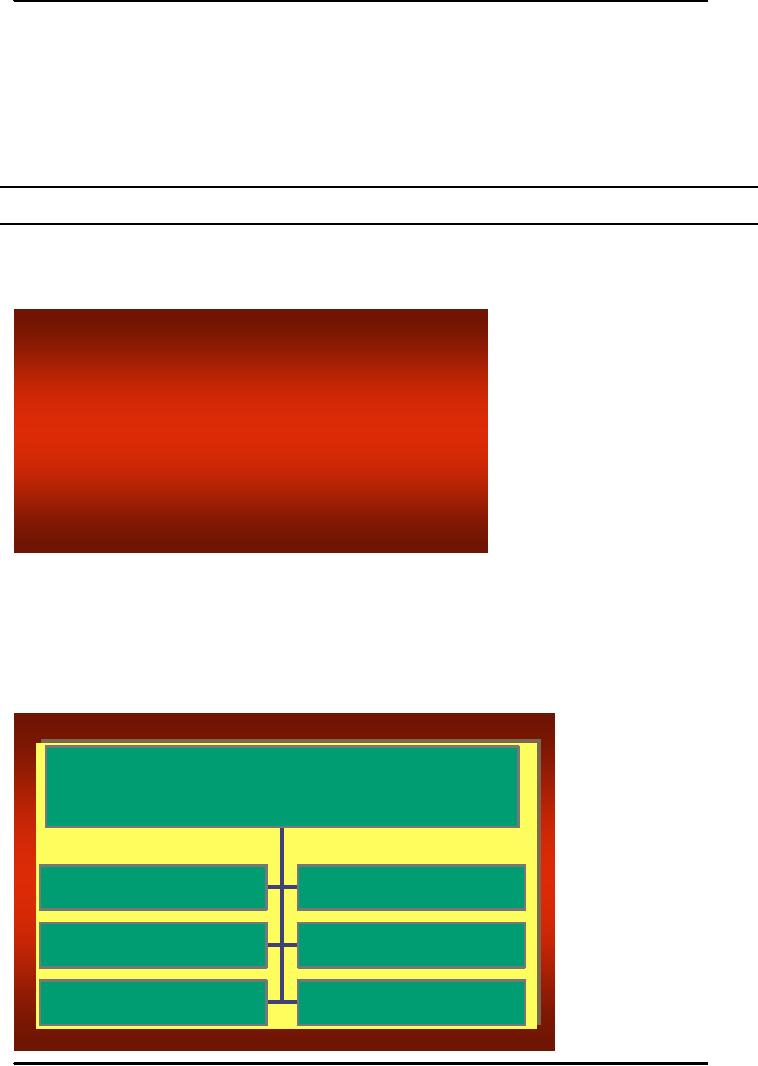 |

Principles
of Marketing MGT301
VU
Lesson
26
Lesson
overview and learning objectives:
We
have already discussed the
different factors affecting
pricing decisions and
approaches that can
be
used to price the
product/services, today we will discuss
price-adjustment strategies.
Price-
adjustment
strategies account for
customer differences and start changing
situations, and strategies
for
initiating and responding to price
changes
PRICE
THE 2ND P OF MARKETING MIX.
A.
Price-Adjustment Strategies
Companies
usually adjust their basic
prices to account for various customer
differences and
changing
situations. Fig summarizes six
price-adjustment strategies: discount
and allowance
pricing,
segmented pricing,
psychological
pricing,
D
is
c o u n t a n d A llo w a n c e
promotional
pricing,
P
r ic in g
geographical
pricing, and
international
pricing.
S
e
g m e n te d P r ic in g
s
y c h o lo g ic a l P r ic in g
P
a.
Discount
and
P
r
o m o tio n a l P r ic in g
Allowance
Pricing
Most
companies adjust their
G
e
o g r a p h ic a l P r ic in g
basic
price to reward
customers
for
certain
In
te r n a t io n a l P r ic in g
responses,
such as early
payment
of bills, volume purchases,
and off-season buying. These
price adjustments--called
discounts
and allowances--can take
many forms.
A
cash
discount is a
price reduction to buyers who
pay their bills promptly. A
typical example is
"2/10,
net 30," which means that
although payment is due
within 30 days, the buyer
can deduct 2
percent
if the bill is paid within
10 days. The discount must
be granted to all buyers meeting
these
terms.
Such discounts are customary in
many industries and help to
improve the sellers'
cash
situation
and
reduce
bad debts
and
credit-
Adjusting
Basic Price to Reward
Customers
collection
costs.
A
quantity
For
Certain Responses
discount
is a
price
reduction
to buyers
who
buy large
volumes.
A typical
Cash
Discount
Seasonal
Discount
example
might be
"Rs10
per unit for
less
than 100 units,
Quantity
Discount
T
rade-In Allow
ance
Rs9
per unit for
100
or more units."
By
law, quantity
Functional
Discount
Prom
otional Allow
ance
discounts
must be
offered
equally to
125

Principles
of Marketing MGT301
VU
all
customers and must not
exceed the seller's cost
savings associated with selling
large quantities.
These
savings include lower selling,
inventory, and transportation
expenses. Discounts provide
an
incentive
to the customer to buy more
from one given seller, rather than
from many different
sources.
A
functional
discount (also
called a trade discount) is
offered by the seller to
trade channel
members
who perform certain functions, such as
selling, storing, and record
keeping.
Manufacturers
may offer different
functional discounts to different trade
channels because of the
varying
services they perform, but
manufacturers must offer the
same functional discounts
within
each
trade channel.
A
seasonal
discount is a
price reduction to buyers who
buy merchandise or services
out of
season.
For example, lawn and
garden equipment manufacturers
offer seasonal discounts to
retailers
during the fall and
winter months to encourage
early ordering in anticipation of
the heavy
spring
and summer selling seasons.
Hotels, motels, and airlines
will offer seasonal discounts
in
their
slower selling periods. Seasonal discounts
allow the seller to keep
production steady during
an
entire
year.
Allowances
are
another type of reduction
from the list price.
For example, trade-in
allowances are
price
reductions given for turning in an
old item when buying a
new one. Trade-in allowances
are
most
common in the automobile
industry but are also given
for other durable goods.
Promotional
allowances
are payments or price reductions to
reward dealers for participating in advertising
and
sales
support programs.
b.
Segmented
Pricing
Companies
will often adjust their
basic prices to allow for
differences in customers, products,
and
locations.
In segmented pricing, the
company sells a product or
service at two or more
prices, even
though
the difference in prices is
not based on differences in
costs.
Segmented
pricing takes several forms.
Under customer-segment pricing, different
customers pay
different
prices for the same
product or service. Museums, for
example, will charge a
lower
admission
for students and senior citizens. Under
product-form pricing, different versions
of the
product
are priced differently but
not according to differences in their
costs. Using location
pricing,
a company charges different
prices for different locations,
even though the cost of
offering
at
each location is the same.
For instance, theaters vary
their seat prices because of
audience
preferences
for certain locations. Finally, using
time pricing, a firm varies
its price by the
season,
the
month, the day, and even
the hour. Public utilities
vary their prices to commercial
users by time
of
day and weekend versus
weekday. The telephone company
offers lower off-peak
charges, and
resorts
give seasonal discounts.
For
segmented pricing to be an effective
strategy, certain conditions must exist.
The market must
be
segmentable, and the
segments must show different
degrees of demand. Members of
the
segment
paying the lower
price
should not be able to
turn
around and resell
the
Selling
Products At Different Prices Even
product
to the segment
paying
the higher
price.
Though
There is No Difference in Cost
Competitors
should not be
able
to undersell the firm
in
the
segment being charged
the
higher price. Nor
should
Custom
er - Segm ent
Location
Pricing
the
costs of segmenting
and
watching
the market exceed
the
extra revenue obtained
Product
- Form
Tim
e Pricing
from
the price difference. Of
course,
the
segmented
126

Principles
of Marketing MGT301
VU
pricing
must also be legal. Most
importantly, segmented prices
should reflect real differences
in
customers'
perceived value. Otherwise, in the
long run, the practice
will lead to customer
resentment
and ill will.
c.
Psychological Pricing
Price
says something about the
product. For example, many
consumers use price to judge
quality.
An
Rs1000 bottle of perfume may
contain only Rs300 worth of
scent, but some people
are willing
to
pay the Rs 1000 because
this price indicates
something special.
In
using psychological pricing, sellers
consider the psychology of
prices and not simply
the
economics.
For example, one study of
the relationship between
price and quality perceptions
of
cars
found that consumers perceive
higher-priced cars as having higher
quality. By the same
token,
higher-quality
cars are perceived to be
even higher priced than
they actually are. When
consumers
can
judge the quality of a
product by examining it or by calling on past
experience with it, they
use
price
less to judge quality. When
consumers cannot judge quality
because they lack the
information
or
skill, price becomes an
important quality
signal:
Another
aspect of psychological pricing is
reference pricing--prices that buyers
carry in their
minds
and refer to when looking at
a given product. The reference
price might be formed
by
noting
current prices, remembering past
prices, or assessing the
buying situation. Sellers
can
influence
or use these consumers' reference
prices when setting price.
For example, a
company
could
display its product next to
more expensive ones in order
to imply that it belongs in
the same
class.
Department stores often sell
women's clothing in separate departments
differentiated by
price:
Clothing found in the more
expensive department is assumed to be of
better quality.
Companies
can also influence consumers'
reference prices by stating high
manufacturer's suggested
prices,
by indicating that the product
was originally priced much
higher, or by pointing to a
competitor's
higher price.
d.
Promotional pricing,
Companies
will temporarily price their
products below list price
and sometimes even below
cost.
Promotional
pricing takes several forms.
Supermarkets and department
stores will price a
few
products
as loss leaders to attract customers to
the store in the hope that
they will buy other
items
at
normal markups. Sellers will
also use special-event
pricing in certain seasons to draw
more
customers.
Manufacturers will sometimes
offer cash rebates to consumers
who buy the
product
from
dealers within a specified
time; the manufacturer sends
the rebate directly to the
customer.
Rebates
have been popular with
automakers and producers of durable goods
and small appliances,
but
they are also used
with consumer-packaged goods.
Some manufacturers offer
low-interest
financing,
longer warranties, or free maintenance to
reduce the consumer's "price."
This practice
has
recently become a favorite of
the auto industry. Or,
the seller may simply
offer discounts from
normal
prices to increase sales and
reduce inventories.
Promotional
pricing, however, can have
adverse effects. Used too
frequently and copied
by
competitors,
price promotions can create
"deal-prone" customers who wait
until brands go on
sale
before
buying them. Or, constantly
reduced prices can erode a
brand's value in the eyes
of
customers.
Marketers sometimes use price
promotions as a quick fix
instead of sweating
through
the
difficult process of developing effective
longer-term strategies for
building their brands. In
fact,
one
observer notes that price promotions
can be downright addicting to both
the company and
the
customer.
The point is that
promotional pricing can be an
effective means of generating
sales in
certain
circumstances but can be
damaging if taken as a steady
diet.
e.
Geographical Pricing
A
company also must decide
how to price its products
for customers located in different
parts of
the
country or world. Should the
company take risk of losing the
business of more
distant
customers
by charging them higher prices to
cover the higher shipping
costs? Or should the
127

Principles
of Marketing MGT301
VU
company
charge all customers the
same prices regardless of location?
Because each customer
picks
up
its own cost, supporters of FOB
pricing feel that this is
the fairest way to assess freight
charges.
The
disadvantage, however, is that
Peerless will be a high-cost
firm to distant
customers?
Uniform-delivered
pricing is the opposite of
FOB pricing. Here, the
company charges the
same
price
plus freight to all customers,
regardless of their location.
The freight charge is set at
the
average
freight cost. Other
advantages of uniform-delivered pricing
are that it is fairly easy
to
administer
and it lets the firm
advertise its price
nationally.
Zone
pricing falls between
FOB-origin pricing and
uniform-delivered pricing. The
company sets
up
two or more zones. All
customers within a given zone pay a
single total price; the
more distant
the
zone, the higher the
price. Using base point
pricing, the seller selects
a given city as a "basing
point"
and charges all customers
the freight cost from
that city to the customer
location, regardless
of
the city from which
the goods are actually
shipped. If all sellers used
the same basing-point
city,
delivered
prices would be the same
for all customers and price
competition would be eliminated.
Industries
such as sugar, cement, steel, and
automobiles used basing-point pricing for
years, but
this
method has become less
popular today. Some
companies set up multiple
basing points to
create
more flexibility: They quote
freight charges from the
basing-point city nearest to
the
customer.
Finally,
the seller who is anxious to do
business with a certain customer or
geographical area
might
use
freight-absorption pricing. Using
this strategy, the seller
absorbs all or part of the
actual freight
charges
in order to get the desired
business. The seller might
reason that if it can get
more
business,
its average costs will fall
and more than compensate
for its extra freight cost.
Freight-
absorption
pricing is used for market
penetration and to hold on to
increasingly competitive
markets.
f.
International Pricing
Companies
that market their products
internationally must decide
what prices to charge in
the
different
countries in which they
operate. In some cases, a
company can set a uniform
worldwide
price.
The price that a company
should charge in a specific
country depends on many
factors,
including
economic conditions, competitive situations,
laws and regulations, and
development of
the
wholesaling and retailing system. Consumer perceptions
and preferences also may
vary from
country
to country, calling for different
prices. Or the company may
have different
marketing
objectives
in various world markets, which require
changes in pricing strategy. Costs play
an
important
role in setting international prices.
Travelers abroad are often
surprised to find
that
goods
that are relatively inexpensive at
home may carry outrageously higher
price tags in other
countries.
In some cases, such price
escalation may result from
differences in selling strategies or
market
conditions. In most instances,
however, it is simply a result of
the higher costs of selling
in
foreign
markets--the additional costs of
modifying the product,
higher shipping and
insurance
costs,
import tariffs and taxes,
costs associated with
exchange-rate fluctuations, and
higher channel
and
physical distribution costs.
128
Table of Contents:
- PRINCIPLES OF MARKETING:Introduction of Marketing, How is Marketing Done?
- ROAD MAP:UNDERSTANDING MARKETING AND MARKETING PROCESS
- MARKETING FUNCTIONS:CUSTOMER RELATIONSHIP MANAGEMENT
- MARKETING IN HISTORICAL PERSPECTIVE AND EVOLUTION OF MARKETING:End of the Mass Market
- MARKETING CHALLENGES IN THE 21st CENTURY:Connections with Customers
- STRATEGIC PLANNING AND MARKETING PROCESS:Setting Company Objectives and Goals
- PORTFOLIO ANALYSIS:MARKETING PROCESS,Marketing Strategy Planning Process
- MARKETING PROCESS:Analyzing marketing opportunities, Contents of Marketing Plan
- MARKETING ENVIRONMENT:The Company’s Microenvironment, Customers
- MARKETING MACRO ENVIRONMENT:Demographic Environment, Cultural Environment
- ANALYZING MARKETING OPPORTUNITIES AND DEVELOPING STRATEGIES:MIS, Marketing Research
- THE MARKETING RESEARCH PROCESS:Developing the Research Plan, Research Approaches
- THE MARKETING RESEARCH PROCESS (Continued):CONSUMER MARKET
- CONSUMER BUYING BEHAVIOR:Model of consumer behavior, Cultural Factors
- CONSUMER BUYING BEHAVIOR (CONTINUED):Personal Factors, Psychological Factors
- BUSINESS MARKETS AND BUYING BEHAVIOR:Market structure and demand
- MARKET SEGMENTATION:Steps in Target Marketing, Mass Marketing
- MARKET SEGMENTATION (CONTINUED):Market Targeting, How Many Differences to Promote
- Product:Marketing Mix, Levels of Product and Services, Consumer Products
- PRODUCT:Individual product decisions, Product Attributes, Branding
- PRODUCT:NEW PRODUCT DEVELOPMENT PROCESS, Idea generation, Test Marketing
- NEW PRODUCT DEVELOPMENT:PRODUCT LIFE- CYCLE STAGES AND STRATEGIES
- KEY TERMS:New-product development, Idea generation, Product development
- Price the 2nd P of Marketing Mix:Marketing Objectives, Costs, The Market and Demand
- PRICE THE 2ND P OF MARKETING MIX:General Pricing Approaches, Fixed Cost
- PRICE THE 2ND P OF MARKETING MIX:Discount and Allowance Pricing, Segmented Pricing
- PRICE THE 2ND P OF MARKETING MIX:Price Changes, Initiating Price Increases
- PLACE- THE 3RD P OF MARKETING MIX:Marketing Channel, Channel Behavior
- LOGISTIC MANAGEMENT:Push Versus Pull Strategy, Goals of the Logistics System
- RETAILING AND WHOLESALING:Customer Service, Product Line, Discount Stores
- KEY TERMS:Distribution channel, Franchise organization, Distribution center
- PROMOTION THE 4TH P OF MARKETING MIX:Integrated Marketing Communications
- ADVERTISING:The Five M’s of Advertising, Advertising decisions
- ADVERTISING:SALES PROMOTION, Evaluating Advertising, Sales Promotion
- PERSONAL SELLING:The Role of the Sales Force, Builds Relationships
- SALES FORCE MANAGEMENT:Managing the Sales Force, Compensating Salespeople
- SALES FORCE MANAGEMENT:DIRECT MARKETING, Forms of Direct Marketing
- DIRECT MARKETING:PUBLIC RELATIONS, Major Public Relations Decisions
- KEY TERMS:Public relations, Advertising, Catalog Marketing
- CREATING COMPETITIVE ADVANTAGE:Competitor Analysis, Competitive Strategies
- GLOBAL MARKETING:International Trade System, Economic Environment
- E-MARKETING:Internet Marketing, Electronic Commerce, Basic-Forms
- MARKETING AND SOCIETY:Social Criticisms of Marketing, Marketing Ethics
- MARKETING:BCG MATRIX, CONSUMER BEHAVIOR, PRODUCT AND SERVICES
- A NEW PRODUCT DEVELOPMENT:PRICING STRATEGIES, GLOBAL MARKET PLACE